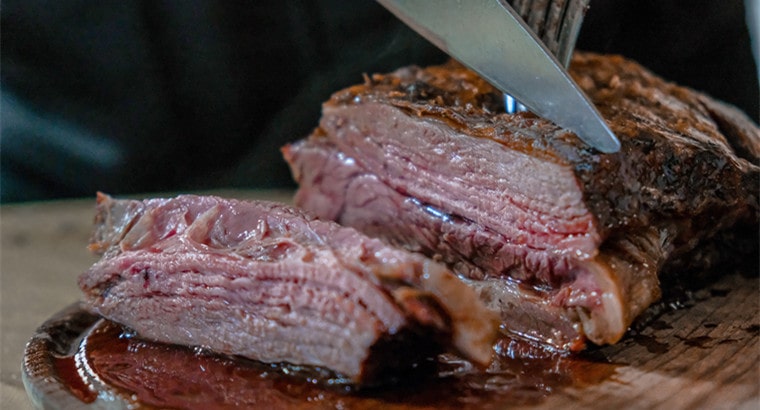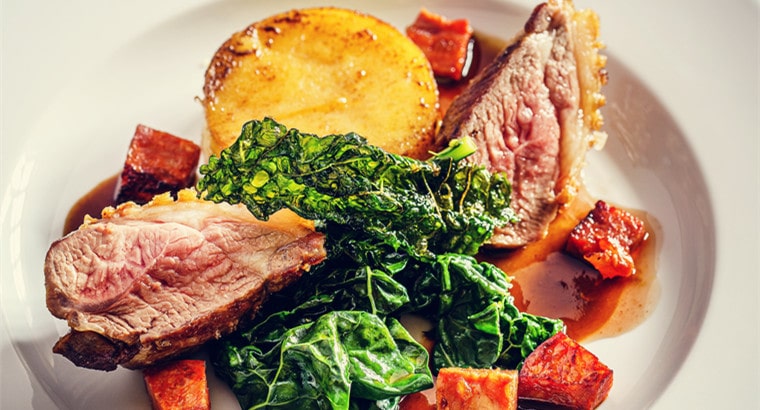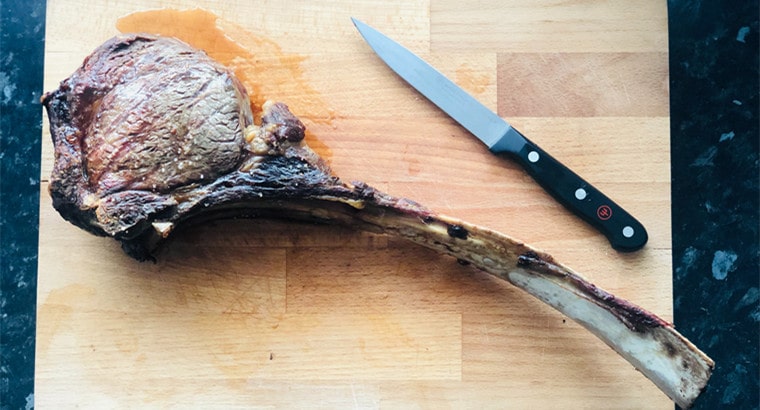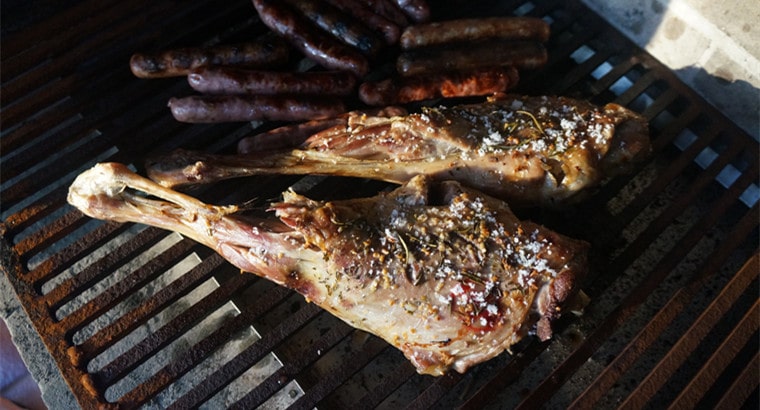Picture this – you’re preparing a great dinner for a special occasion and want to impress your guests. While you can definitely choose a staple meat like chicken or beef for your main course, why not get a little more adventurous and try making lamb instead?
This delicious, tender meat has a unique flavor profile that will delight your taste buds. But the trick is, you have to prepare it properly. So, if you’re planning to have lamb chops for your next meal, here are all your prep tips—how to cook them, is it safe, and most importantly, can you eat lamb medium rare?
Can you eat lamb medium rare?

You don’t have to be a professional chef to know that eating raw meat is a dangerous game. The animals we use for food carry countless pathogens that can seriously endanger your health.
Raw beef, for example, is often a host for E. coli, a naturally occurring bacterium that can cause kidney failure and toxic shock. Raw chicken is often full of salmonella, a dangerous gut bacteria that can cause serious food poisoning. Lamb can also be a breeding ground for both, and a host of other unpleasant pollutants.
But, the good news is that most of these pathogens live on the surface of raw meat. So searing the sides of the wound should be enough to be safe. For lamb, this means cooking the meat to medium rare.
Medium rare is the most common type of doneness for all meats. It gives the meat a crispy brown exterior while making the interior pink and juicy. If you’re cooking the cutlets on the stove, that means frying them for 6-7 minutes, until the internal temperature reaches 145°F.
If you prepare the lamb in the oven, you have to roast it for about 25 minutes. Start cooking at 450°F for the first fifteen minutes, then reduce the temperature to 350°F to finish cooking.
However, keep in mind that cooking times and temperatures will largely depend on the type of meat you use. For example, smaller, leaner cuts like legs or loins require shorter cook times to turn medium rare. On the other hand, larger, fatty meats like brisket do better when slow cooked because the fat has enough time to melt and tenderize the meat.
Is the mutton medium-rare or medium-rare?

Lamb is known to be safe to eat when cooked until medium rare. But does it make it delicious? If you’ve never eaten this particular type of meat, you might be wondering if cooking it well-done would improve its flavor.
The answer is that it all depends on personal preference. For example, most Americans prefer lamb rare. This level of doneness makes the meat crispy on the outside while leaving a soft pink center, perfect for a leg of lamb.
French chefs, on the other hand, like to make their lamb extra rare, especially in oven-baked dishes gigot d’agneau pleureurConverted to Weeping Leg of Lamb RoastThe Greeks took the opposite approach and cooked their lamb until it was so well done it practically fell off the bone. This method works well for kebabs or recipes that use cured meat, such as kebabs.
But no matter what a professional chef recommends, you should always put your own preferences first. If you like your meat medium rare, make it medium rare.
Or, if you’re a fan of well-done meats, try recipes that call for well-done meats. There are so many ways to cook lamb so it’s delicious for you and your loved ones!
Risks of eating rare lamb

It happens to everyone from time to time. You eat a piece of meat and later find it too raw to be safe. what to do? The first step is not to panic.
Getting sick depends on where you get the meat from and how it was stored. Sealing the meat in plastic wrap and flash freezing it helps keep it fresh for longer. It also inhibits the growth of harmful bacteria. So, if the rare lamb chops you eat are sealed and preserved properly, then you don’t have to worry.
However, if you start to feel unwell after eating meat, it may be time to contact your doctor. Raw lamb carries dangerous pathogens that can cause quite serious food poisoning. Some of the most common signs of foodborne illness include:
• nausea
• diarrhea
• Vomit
• stomach cramps
• stomachache
• fever
These symptoms may appear 1-12 days after eating contaminated meat. With rest and plenty of fluids, they usually go away on their own within a week or less. However, in severe cases, food poisoning can lead to paralysis, neurological problems, and even death.
So if you do get sick, it’s critical to contact your doctor to stop your symptoms from getting worse.
How to Cook Lamb Safely: 3 Tips

All in all, it’s perfectly safe to enjoy a piece of lamb medium-rare – however, only if you prepare it properly. So the next time you’re whipping up a delicious lamb dinner, keep these three basic cooking tips in mind.
1. Buy lamb from trusted sources
As with any other food product, it’s important to buy meat from a supplier you can trust. Many people prefer to buy cuts of meat from a local butcher. While this meat is more expensive, it is also fresher and of higher quality.
Plus, many say it’s safer because they trust that organic farmers won’t be feeding their animals harmful antibiotics and GMOs.
However, that doesn’t mean supermarket meat is inherently dangerous. The USDA strictly regulates all meat products in supermarkets to ensure they do not contain any harmful bacteria or toxins.
So while it may not be premium, supermarket meat is still safe to eat – especially if you want a good meal on a tight budget.
2. Clean cuts before cooking
As a consumer, you play an important role in ensuring the safety of your meat. Therefore, you should do everything possible to prepare and cook your food properly. This includes storing the meat you buy in the refrigerator until you plan to use it. Before you start cooking, make sure you wash your hands and all utensils you need to prepare food.
Cut meat on a clean plastic cutting board. Avoid wooden planks, as wood can easily absorb gravy and allow bacteria to grow. This could lead to cross-contamination if you continue to use the same cutting board to prepare other products.
3. Use a thermometer to check doneness
The last step is to cook the meat properly. Since everyone’s oven is different, your exact cooking time may differ from what is recommended for a particular recipe. So, to avoid undercooked or overcooked meat, invest in a food thermometer. This nifty little tool is an inexpensive but very useful way to make sure your lamb dishes are just right!
